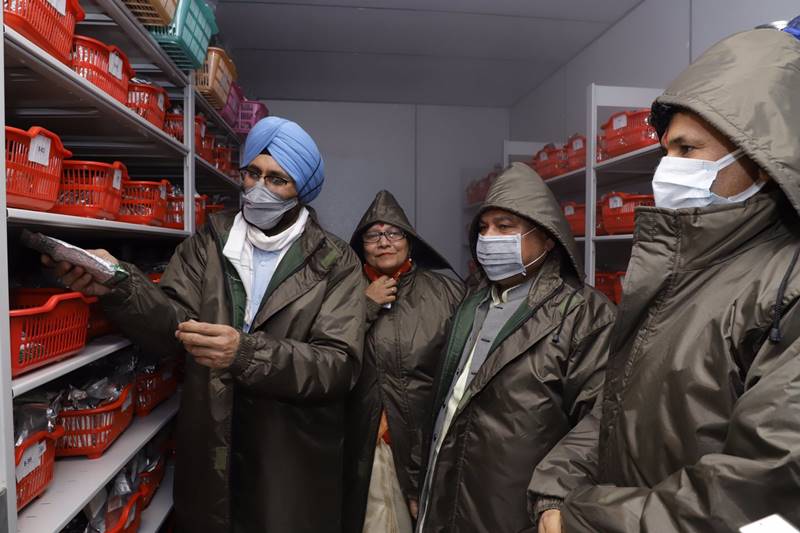The world’s second largest gene bank to preserve seeds comes up in India
The National Bureau of Plant Genetic Resources sets up the world’s second largest refurbished gene bank in New Delhi that is currently home to the germplasms of 452,000 seeds. It can safely store up to one million germplasms and will be of great help to the farmers and the scientific community.


Currently, the national bureau has germplasms of 452,000 seeds of which 270,000 are sourced from India and the rest are imported from other parts of the world.
Three days back, on August 16, Narendra Singh Tomar, Union Minister of Agriculture and Farmers Welfare, dedicated the National Bureau of Plant Genetic Resources, New Delhi to the nation in its updated avatar as the world’s second largest gene bank. The largest gene bank in the world is situated in Norway.
The National Genebank, which was set up in 1996, has been upgraded with the latest technology and now has the capacity to conserve approximately one million germplasm. The germplasm will not just help farmers in the future, but will also be a great resource for scientific research.
“Seeds from Kashmir in the north to Kanyakumari in the south, Gujarat in the east to the northeastern states, are stored at the institute. Artificial Intelligence is a big part of the set up,” Veena Gupta, chief scientist, National Bureau of Plant Genetic Resources, told Gaon Connection.
Currently, the national bureau has germplasms of 452,000 seeds of which 270,000 are sourced from India and the rest are imported from other parts of the world.

Along with the National Bureau of Plant Genetic Resources, there are 10 other regional centres across the country at Akola (Maharashtra), Bhowli (Uttarakhand), Cuttack (Odisha), Hyderabad (Telangana), Jodhpur (Rajasthan), Shillong (Meghalaya), Ranchi (Jharkhand), Shimla (Himachal Pradesh), Thrissur (Kerala) and Srinagar (UT of Jammu and Kashmir).
These centres are together meeting the geneplasm requirement in the country. The seeds from the gene banks are also available to breeders wanting to develop high quality seeds.
Also Read: A library for rice with grains from the past
Storing the seeds
Before they are stored in the gene bank, the seeds undergo a long process. “The seeds are tested for moisture, then it is ensured there are no pests or their eggs in them. Thereafter, the seeds are put through a germination test where only if ninety per cent of them do generate, they are found fit to be kept in the bank,” explained Gupta.
For a long life expectancy of the seeds, they are stored in minus 18 degrees centigrade. Some of them are stored in vitro-banks at minus 25 degrees centigrade and in cryogen banks at minus 196 degrees centigrade.

The seeds stored in the bank are of various kinds of paddy, wheat, millets, pulses, oil seeds, vegetables, fruits, medicinal plants, flowers, spices, and many many more.
The world’s largest seed bank at Norway, the Svalbard Global Seed Vault, can hold up to 4.5 million germplasms. These seeds are drawn from across the world and belong to varieties of maize, rice, wheat, beans, millets, besides vegetable seeds.
Read the story in Hindi

